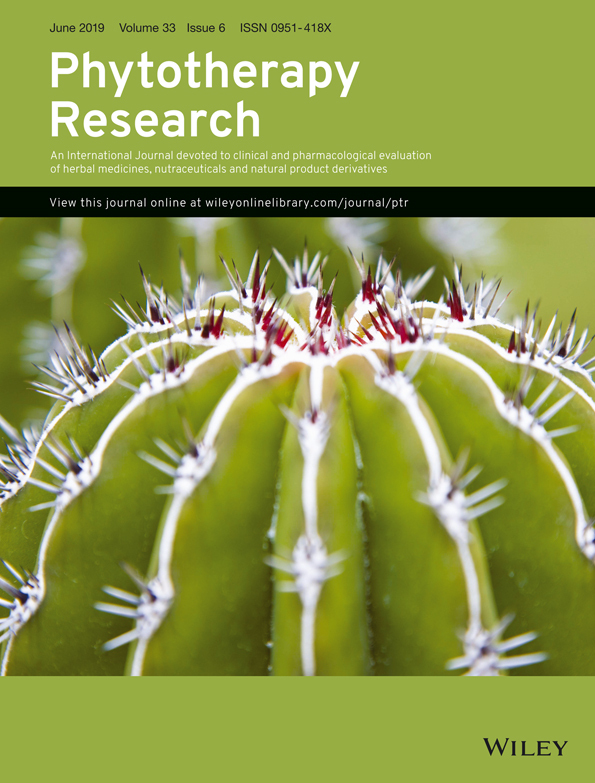 “Current pharmacotherapy of Parkinson’s disease (PD) is palliative and unable to modify the progression of neurodegeneration. Treatments that can improve patients’ quality of life with fewer side effects are needed, but not yet available.
“Current pharmacotherapy of Parkinson’s disease (PD) is palliative and unable to modify the progression of neurodegeneration. Treatments that can improve patients’ quality of life with fewer side effects are needed, but not yet available.
Cannabidiol (CBD), the major non-psychotomimetic constituent of cannabis, has received considerable research attention in the last decade. In this context, we aimed to critically review the literature on potential therapeutic effects of CBD in PD and discuss clinical and preclinical evidence supporting the putative neuroprotective mechanisms of CBD.
RESULTS:
Few studies addressed the biological bases for the purported effects of CBD on PD. Six preclinical studies showed neuroprotective effects, while three targeted the antidyskinetic effects of CBD. Three human studies have tested CBD in patients with PD: an open-label study, a case series, and a randomized controlled trial. These studies reported therapeutic effects of CBD on non-motor symptoms.
CONCLUSIONS:
Additional research is needed to elucidate the potential effectiveness of CBD in PD and the underlying mechanisms involved.”
https://www.ncbi.nlm.nih.gov/pubmed/31314869
http://www.scielo.br/scielo.php?script=sci_arttext&pid=S1516-44462019005012104&tlng=en

 “Cardiac disease is accounted as the leading cause of worldwide morbidity and mortality, mainly in association with induction of inflammation and oxidative stress. The disease is characterized by the overproduction of reactive oxygen and/or nitrogen species (ROS/RNS), and reduced antioxidant capacity.
“Cardiac disease is accounted as the leading cause of worldwide morbidity and mortality, mainly in association with induction of inflammation and oxidative stress. The disease is characterized by the overproduction of reactive oxygen and/or nitrogen species (ROS/RNS), and reduced antioxidant capacity. “The
“The 

 “Chronic, therapy-resistant pruritus often fails to respond to standard measures so new therapeutic approaches are needed.
“Chronic, therapy-resistant pruritus often fails to respond to standard measures so new therapeutic approaches are needed. “The present study investigates the potential effect of a Cannabis sativa L. ethanolic extract standardized in cannabidiol as antiinflammatory agent in the skin. The extract inhibited the release of mediators of inflammation involved in wound healing and inflammatory processes occurring in the skin. Cannabis extract and cannabidiol showed different effects on the release of interleukin-8 and vascular endothelial growth factor, which are both mediators whose genes are dependent on NF-κB. Our findings provide new insights into the potential effect of Cannabis extracts against inflammation-based skin diseases.”
“The present study investigates the potential effect of a Cannabis sativa L. ethanolic extract standardized in cannabidiol as antiinflammatory agent in the skin. The extract inhibited the release of mediators of inflammation involved in wound healing and inflammatory processes occurring in the skin. Cannabis extract and cannabidiol showed different effects on the release of interleukin-8 and vascular endothelial growth factor, which are both mediators whose genes are dependent on NF-κB. Our findings provide new insights into the potential effect of Cannabis extracts against inflammation-based skin diseases.” 
 “The cannabinoid receptor CB1 is involved in modulation of neuronal hypersensitivity and pain. The aim of this study was to evaluate CB1 receptor levels for the first time in dental pain. A total of 19 patients due for molar extraction were divided into two groups, those with existing dental pain (n=9), and those with no history of pain (n=10). Immunohistochemistry and computer image analysis was used to evaluate CB1-positive nerve fibres in tooth pulp, with neurofilament-immunostaining as a structural nerve marker. CB1-immunoreactive nerve fibres were scattered throughout the tooth pulp and often seen in nerve bundles, but the fibres did not penetrate the subodontoblastic layer. There was no statistically significant change in the CB1 nerve fibre percentage area in the painful group compared to the non-painful group (p=0.146); the neurofilament fibres were significantly reduced in the painful group compared to the controls (p=0.028), but there was no difference in the ratio of CB1 to neurofilaments between the two groups. Thus, CB1 expression is maintained by nerve fibres in painful human dental pulp, and peripherally-restricted CB1 agonists currently in development may advance the treatment of dental pain.”
“The cannabinoid receptor CB1 is involved in modulation of neuronal hypersensitivity and pain. The aim of this study was to evaluate CB1 receptor levels for the first time in dental pain. A total of 19 patients due for molar extraction were divided into two groups, those with existing dental pain (n=9), and those with no history of pain (n=10). Immunohistochemistry and computer image analysis was used to evaluate CB1-positive nerve fibres in tooth pulp, with neurofilament-immunostaining as a structural nerve marker. CB1-immunoreactive nerve fibres were scattered throughout the tooth pulp and often seen in nerve bundles, but the fibres did not penetrate the subodontoblastic layer. There was no statistically significant change in the CB1 nerve fibre percentage area in the painful group compared to the non-painful group (p=0.146); the neurofilament fibres were significantly reduced in the painful group compared to the controls (p=0.028), but there was no difference in the ratio of CB1 to neurofilaments between the two groups. Thus, CB1 expression is maintained by nerve fibres in painful human dental pulp, and peripherally-restricted CB1 agonists currently in development may advance the treatment of dental pain.”
 “The present findings reveal an imbalance in the expression and function of different elements of the endocannabinoid system in schizophrenia.
“The present findings reveal an imbalance in the expression and function of different elements of the endocannabinoid system in schizophrenia.